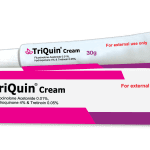Manufacturers need access to cash when unforeseen expenses arise. If you’re looking for a fast and easy business financing solution, manufacturing loans are an option worth considering.
You can get a manufacturing loan from large banks, equipment dealers, credit unions or alternative lenders. These loans can help you purchase tangible assets, balance your cash flow and fuel growth.
Large Purchase Orders
A large purchase order from a major client is a great reason to celebrate, but it often comes with a financial challenge. The company has to pay for the materials that will be used to make the product and then wait a month or two before getting paid by their customer. This type of working capital gap makes it difficult for small companies to grow.
Fortunately, there are financing options that can help. One option is purchase order financing. This is a type of financing that does not rely on the company’s credit or balance sheet but instead looks at the invoice from the end customer and their ability to pay it.
The company must have physical products to qualify for this type of funding, but it can be a good solution if the business has a lot of orders that exceed its cash on hand. This type of financing is not a good fit for service based businesses.
Equipment Maintenance
For production businesses, equipment and machinery are investments that need to be protected at all costs. Even small issues like warped belts and dry or cracked seals can quickly become more costly than they should be if ignored.
A good preventive maintenance plan will cover everything from scheduled servicing intervals to stocking up on replacement parts. It’s important to have a person in charge of administering this plan, as well as keeping track of each piece of equipment and any history related to it.
Whether it’s a small operation with hands-on ownership or a large business that delegated responsibility to a fleet manager, the plan must be in place and adhered to. Often, equipment management software can help you create a service schedule based on calendar or usage time. It’s also a good idea to incorporate regular visual inspections that will flag any issues, such as worn or deteriorating gears or loose bolts. These can be fixed before they lead to larger problems.
Overhead Costs
Overhead costs include indirect factory-related expenses that cannot be traced back to a specific product. Examples of these include rent for the factory, utilities bills, depreciation on equipment, oil repairs, and other maintenance expenses. They are added to direct labor and materials to create a cost of goods sold for each unit manufactured.
Overhead rates are a critical factor for small business owners to understand when developing their pricing strategy. By tracking overhead costs and finding ways to cut these costs, businesses can increase their profit margins.
Overhead costs can be divided into fixed, variable, and semi-variable. The majority of overhead expenses are fixed and recur on a monthly basis, such as office rent, insurance, payroll, and utility bills. Other overhead expenses can vary based on manufacturing volume, such as advertising costs. Semi-variable costs are those that fluctuate and can be unpredictable. These may include interest rates on loans, bank charges, and fees for services related to financing activities.
Working Capital
Manufacturing companies often experience large cash gaps between landing a big new order and realizing the profits from the sale. This is because they must purchase materials upfront and carry the cost of labor throughout production before shipping and invoicing. Many customers also use net terms and will not pay until 30, 60 or even 90 days from the date of purchase. This can lead to an extended operating cycle and large accounts receivable.
A revolving line of credit can be a great solution to manage temporary working capital needs. It will allow you to borrow against assets instead of your company’s cash flow and can help bridge the gap between expenses and revenues.
Managing working capital is essential for companies to be able to pay their bills and invest in growth. Studies have shown that the relationship between working capital management and firm value is a nonlinear one. This is because policies that increase working capital may lead to higher discounts on invoices or longer payment terms, both of which can improve a business’s profitability.


